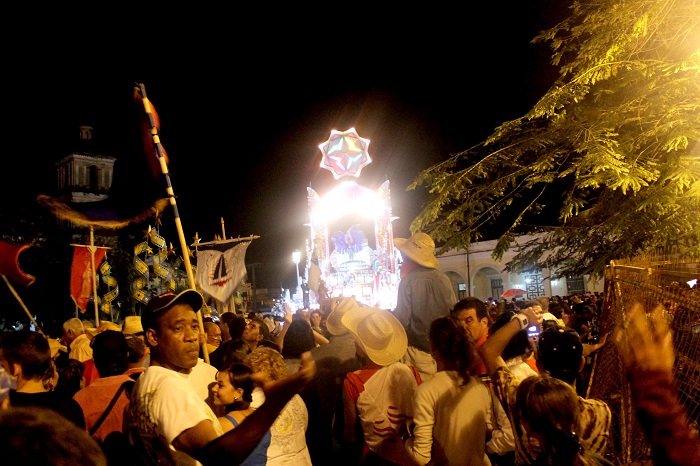I found out about the Las Parrandas Festival a few years ago when I had my first glimpse of Cayo Santa Maria in Villa Clara province. Despite wanting to see the festivities for the longest time, I could never find the time to visit as I usually spend my Christmas vacation outside of Cuba. Sensing that this might be my last opportunity to see the famed festival in person, I decided to check out the festivities this year.
Traditionally held every Christmas Eve in the historic town of Remedios, which is the one of the oldest settlements established by the Spanish colonizers in Cuba, the festivities were initially concocted by a Spanish friar named Francisco Vigil de Quiñones to entice his parishioners to attend the “Misa de Gallo” or Midnight Mass on Christmas Eve.
It has since become more than just a Christian tradition. It now involves a battle royale between two contending barrios, San Salvador and El Carmen, who try to outdo each other in creating the better fireworks display and colorful “carrozas” or floats. In between, musical groups and bands from the two contending sides liven up the festivities with Cuban son, salsa and rumba to a boisterous crowd fueld by an overflowing supply of rum and beer.
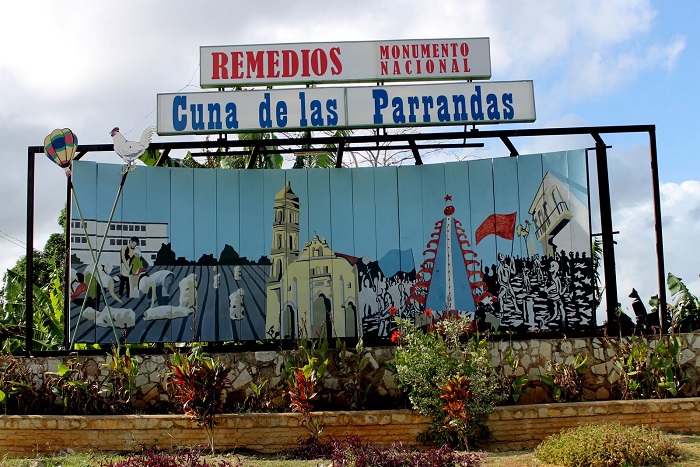
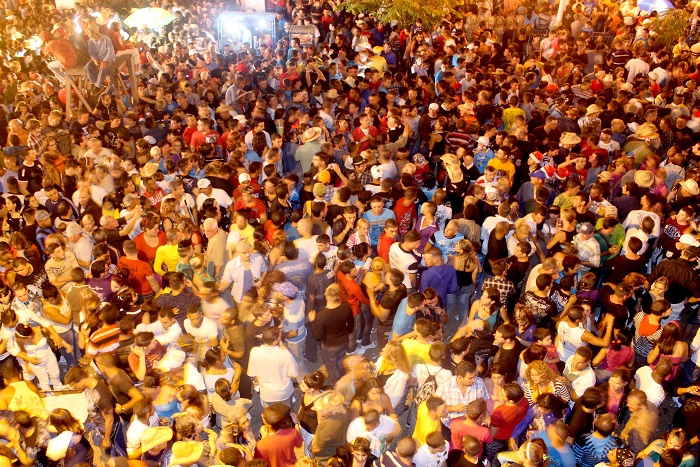
I barely had any sleep the whole time so I first looked for a bed-and-breakfast place to get some rest before plunging myself into the party scene. Staying in a so-called casa particular, which is typically a room-for-rent, is the cheapest lodging option available for tourists in Cuba. It set me back around USD 30-35 per night, which is a lot cheaper than staying in a hotel and a lot more convenient. By using one, you are also contributing to the development of the nascent private sector in Cuba. The personalized service one gets from the casa owners is also much better than the one you will receive from any of the government-controlled hotels. Per experience, customer service, it seems, is still an art unlearned by Cuba’s hospitality industry.
I was awakened by the furious pealing of church bells (called repique by locals) at around 5:00 p.m. It was as all bedlam from thereon. Bengalas or flares and cojetes or rockets were streaking to the clouds while mortar-like contraptions known as morteros were spewing projectiles to the delight of an enormous crowd that had congregated in the town plaza. Las Parrandas has commenced. Revelers from the barrio of San Salvador, proudly waving their fighting rooster banner, would fire the first salvo to be answered later by their rivals from El Carmen, who were wearing their traditional brown shirts. They were lustily cheered on by their diehard supporters, who were boisterously arguing the merits of their side over the other. The tit-for-tat competition would last throughout the night.
I took the opportunity to walk the town’s cobbled streets and I was amazed at how much it reminded me of the ferias of my youth. Some enterprising locals have set up ingeniously-assembled amusement rides. Others have set up betting counters which reminded me of spin-the-wheel type contraptions of Philippine ferias. Others have set up betting joints for dice and number games. All the while, I thought gambling is prohibited in Cuba. The only thing missing to totally remind me of home was a cock-fighting derby, which by the way, before the 1959 revolution was a very popular past time in Cuba. For those looking to shop and buy food and drinks, vendors have also set up baratillos and food counters along the town’s pedistrianized peatonal.
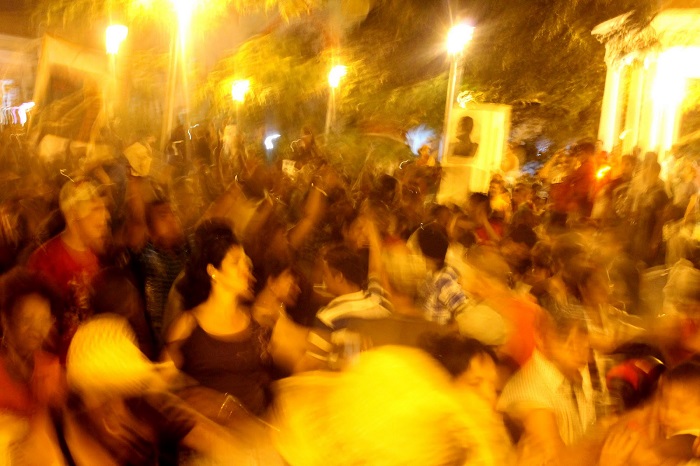
By 7:00 p.m., the town plaza was already packed to the rafters with revelers from all over Villa Clara province with a few sprinkling of tourists on hand to witness the revelry. Flag waiving musical groups would usually lead a conga line of rowdy dancers around the town plaza. All through the night, rival groups from San Salvador and El Carmen would try to outdo each other in cavalcades of fireworks display and noise-making. It seems that everyone was taking a swig out of a bottle of rum, men and women alike. If the constant rum-drinking was not going to intoxicate them enough, the crowd’s rhythm and the riotous atmosphere would turn any wallflower into an untamed animal.
As the night wore on, injuries from the exploding fireworks began to pile up. Medics were carting off a steady stream of revelers who were concussed or had suffered other explosion-related injuries. This was because time and again, wayward showers of cojetes would bombard the scampering, delirious crowd. It also did not help that many of those tasked with lighting the firecrackers were intoxicated. I would find out a day later that I myself suffered minor burns on my right arm and my sneakers had burn marks all over them. I was as inebriated as the crowd that I failed to notice that during the night. I was able to convince the guards to allow to me to take pictures alongside those who were lighting the firecrackers by pretending to be some news correspondent from Nippon news agency. I got my pics but I got burned in the process, it seems.
Everyone was eagerly waiting for the carrozas to face off, but it was not until 3 a.m. when they were scheduled to run. Prior to that at around midnight, the crowd was wowed by the competing giant lantern and lighting displays set up by both sides, which really reminded me of a giant Pampanga-made farol equipped with lights. El Carmen was the presumed winner. I wonder whether they copied this art from Pampanga or the other way around.
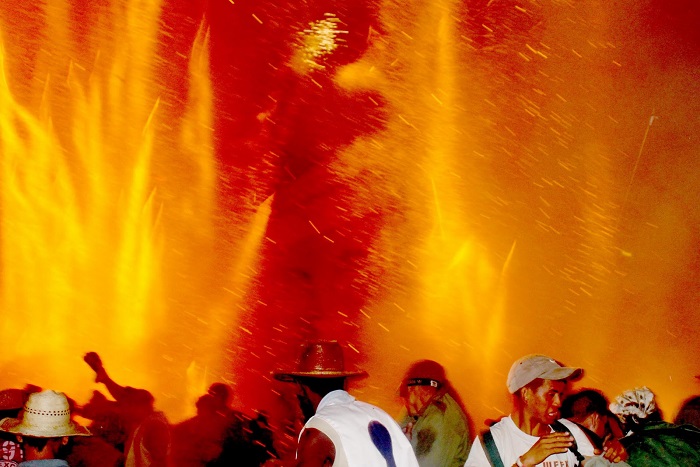
Strangely, for a festivity that is being held on Christmas Eve and was formerly established by Spanish friars for Christmas celebration, the spirit of Christmas or for that matter Christianity is patently lacking. I observed that the centuries-old Catholic Church never opened its doors for a traditional misa de gallo at midnight although I did notice many people lining up beside the puerta mayor waiting for it to open. The Church was used for different purpose altogether which was in the form of an emergency latrine for both drunken men and women. It might have been well that the Church did not have a mass that night. The only aroma churchgoers would have smelled at that time was the whiff of piss and vomit. I was guilty myself of using its muro or walls for emergency latrine services. When in Rome, do what the Romans do!
By the time the carrozas commenced their parade at around 3:00 a.m., many revelers had already left. Only diehard revelers, mostly drunken ones were left to witness the parade of the amazingly-adorned floats. I was so drunk myself that I did not notice then that somebody had stolen my bottle of Havana Club rum which I placed on my back pocket. Yeah, people were that desperate to get drunk that they had to resort to stealing other people’s bottle of rum. A small price to pay for the whole experience. At least I still had my wallet with me. Otherwise I would would have hitch-hiked home to Havana.
I was rooting for the San Salvador carroza, which used a colorful Hollywood theme, to win. The carrozas rounded the plaza and faced off along the plaza’s periphery for the final judgment by the jurors. Strangely, the contest ended in a tie, as it apparently does every year. This is of course an egalitarian society. In Cuba, everybody wins (or losses, conversely), but who really cares about those things! The most important thing is everybody had fun (including those concussed fools, I hope).
